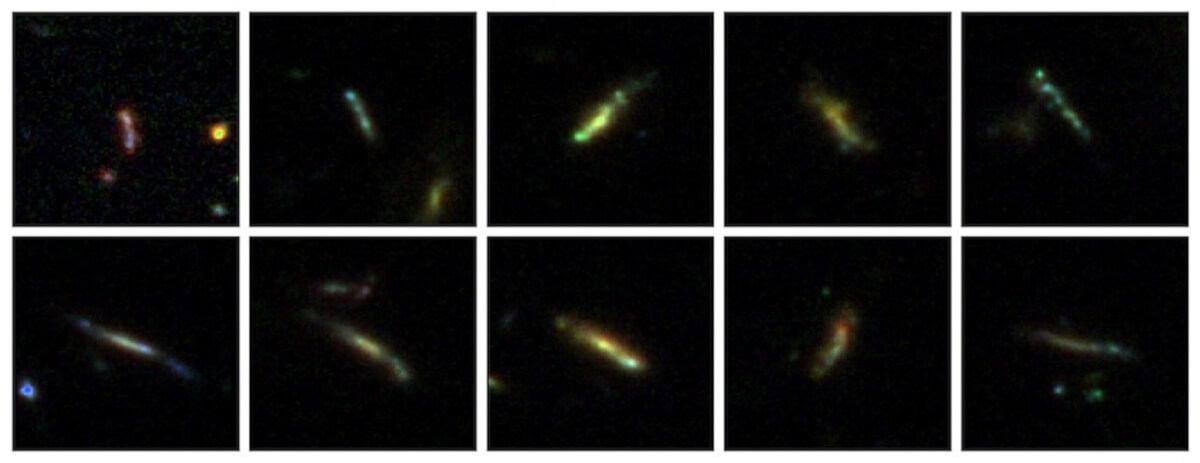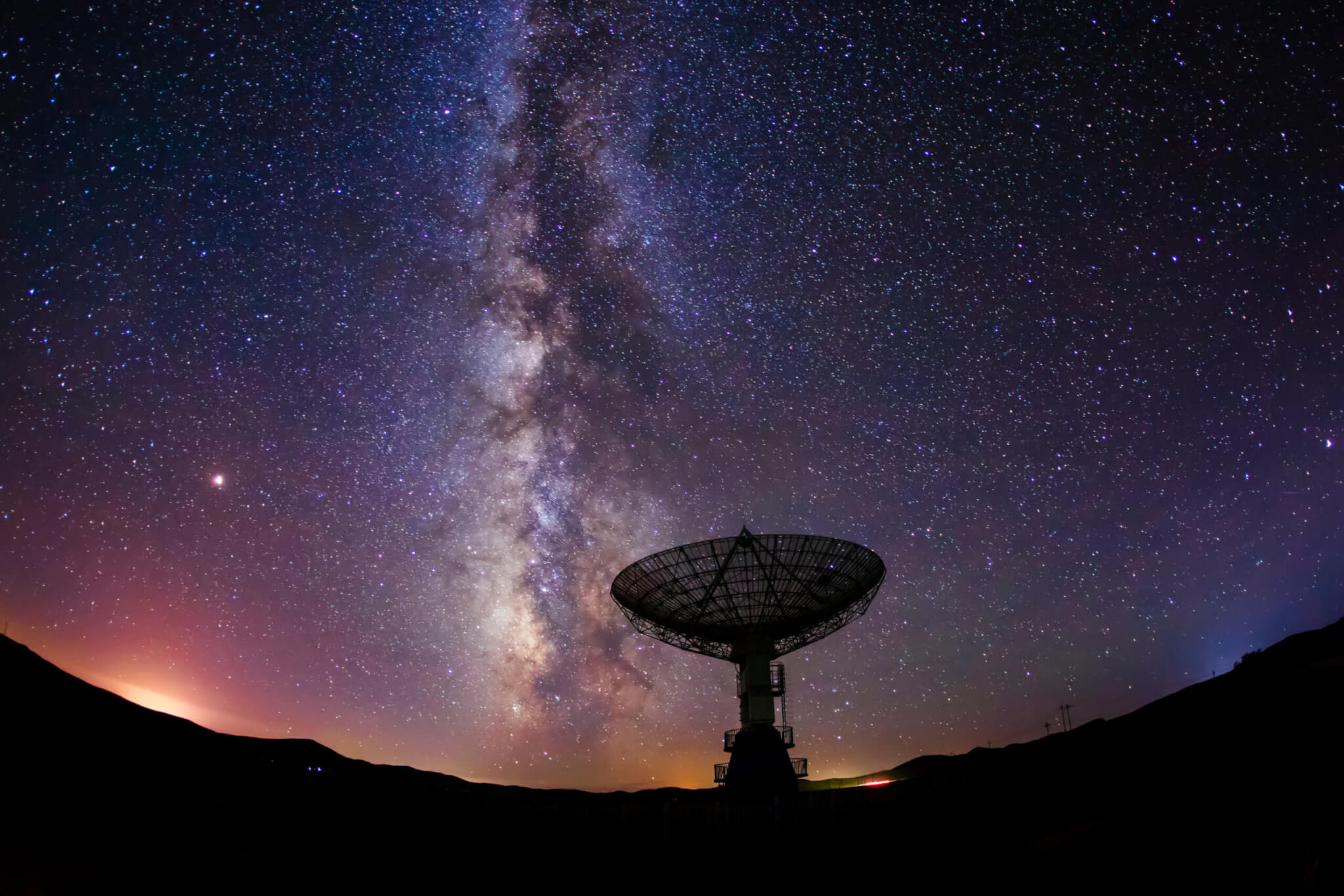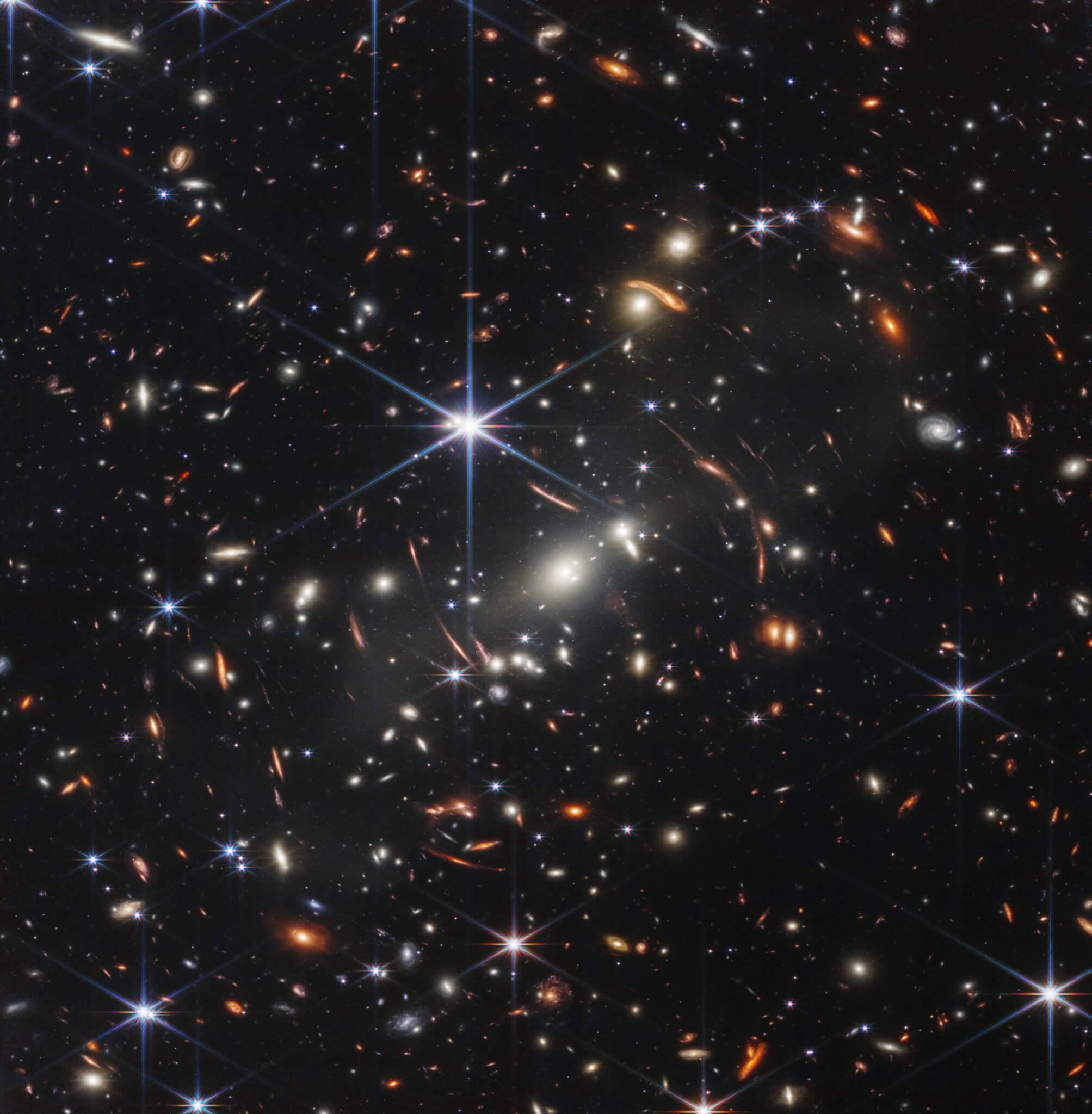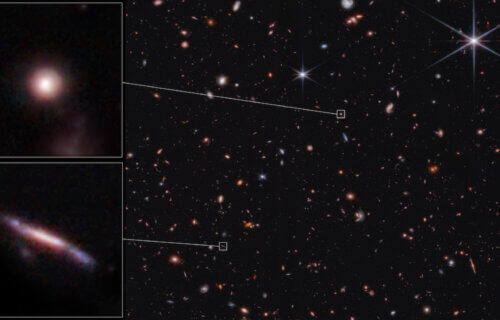🔑 Key Findings:
- Up to 80% of galaxies astronomers studied appeared to be 2-dimensional
- Scientists compared early-universe galaxies to both bananas and breadsticks
- Dark matter may have created ‘cosmic highways’ that formed these shapes
NEW YORK — This study will surely make you hungry. Researchers at Columbia University analyzing images from NASA’s James Webb Space Telescope have made an intriguing discovery: galaxies in the early universe often resembled flat, elongated “breadsticks,” and were rarely round like “balls of pizza dough.”
The study involved examining a collection of near-infrared images from the Cosmic Evolution Early Release Science (CEERS) Survey taken by the Webb telescope. These images depicted galaxies that existed when the universe was between 600 million to six billion years-old.
“Roughly 50 to 80 percent of the galaxies we studied appear to be flattened in two dimensions,” says study lead author Viraj Pandya, a NASA Hubble Fellow at Columbia University, in a university release. “Galaxies that look like long, thin breadsticks seem to be very common in the early universe, which is surprising, since they are uncommon among galaxies in the present-day universe.”

Scientists observed that while most distant galaxies resembled breadsticks, others took on shapes akin to pizza pies and balls of pizza dough. The spherical galaxies, resembling “balls of pizza dough,” were identified as the smallest and least frequent type. In contrast, the pizza pie-shaped galaxies matched the size of breadstick-shaped galaxies along their longest axis.
Study co-author Haowen Zhang, a PhD candidate at the University of Arizona, speculated that the Milky Way galaxy might have appeared more like a breadstick billions of years ago. This hypothesis is based on new evidence from the Webb telescope and theoretical projections of the Milky Way’s mass in the distant past.
These distant galaxies were found to be less massive than nearby spirals and ellipticals, indicating they were precursors to more massive galaxies like our own.
“In the early universe, galaxies had had far less time to grow,” says study co-author Kartheik Iyer, a NASA Hubble Fellow at Columbia University. “Identifying additional categories for early galaxies is exciting — there’s a lot more to analyze now. We can now study how galaxies’ shapes relate to how they look and better project how they formed in much more detail.”

Researchers also addressed a longstanding observation from the Hubble Space Telescope, which has consistently shown an excess of elongated galaxies. Study co-author Marc Huertas-Company, a faculty research scientist, notes that the Webb telescope’s sensitivity to infrared light confirmed Hubble’s findings and revealed many more distant galaxies with similar shapes.
“Webb confirmed that Hubble didn’t miss any additional features in the galaxies they both observed,” says Huertas-Company.
A key question is why early galaxies were so flattened and elongated. Pandya suggests that the early universe might have been filled with filaments of dark matter, forming a “cosmic highway” that guided the formation of these breadstick-shaped galaxies. As the universe expanded, these filaments became more diffuse, possibly influencing the shape of later galaxies.
An interesting aspect of their research was the visual representation of the galaxies’ aspect ratios and their longest axis length, which resembled bananas. This comparison led to their paper being titled “Galaxies Going Bananas,” reflecting the dominant shape of galaxies in the first four billion years of the universe.

Despite these early results, there’s still much to learn.
“We need to delve more deeply into the data to figure out what’s going on, but we’re very excited about these early trends,” concludes study co-author Elizabeth McGrath, an associate professor at Colby College in Waterville, Maine.
The study is published in The Astrophysical Journal.
